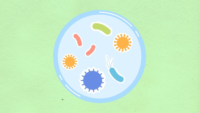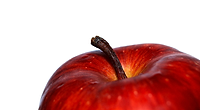USDA Study Shows WGS Could Detect Salmonella on Food-Contact Surfaces Earlier Than Culturing

Image credit: Freepik
A new study by U.S. Department of Agriculture Agricultural Research Service (USDA-ARS) scientists has demonstrated the potential of long-read whole genome sequencing (WGS) for early detection of Salmonella on food-contact surfaces, which could give processors time to implement sanitation interventions before biofilms are formed. The study was published in Microorganisms.
Historically, the difficulty of early and accurate Salmonella detection in food production environments has hindered the application of sanitation interventions before biofilms form and pathogens spread or contaminate food products. Previous research has shown that the longer a biofilm forms, the stronger the intervention required for its removal—which can be problematic, as chemical sanitizers can generate toxic byproducts and contribute to the development of antibiotic-resistant bacteria. The ability to detect biofilm formation earlier would facilitate remediation prior to the formation of a more mature—and therefore more difficult to remove—biofilm.
Long-read WGS has advanced significantly in the past decade, with the technology now offering a potentially more rapid and sensitive alternative to commonly used detection methods. Because long-read WGS has not yet been used for the direct detection of foodborne pathogens on food-contact surfaces, the present study was designed to compare traditional culture-based detection methods and novel sequencing methods for the identification of Salmonella during the early stages of cell attachment to common food-contact surface materials.
The USDA-ARS researchers introduced a strain of Salmonella Typhimurium, which was seen in previous studies to form strong biofilms within 24 hours, to coupons made of three materials commonly used as food-contact surfaces in the egg industry: stainless steel, silicone, and nylon. Both culturing and sequencing detection methods were tested against the inoculated coupons. Samples were removed at one hour for sequencing, and hourly at 0–5 hours for cell quantification.
Culture techniques did not detect Salmonella on any of the coupons at from 0–2 hours. After three hours of incubation, cell attachment was detected at less than 1 log colony forming unit per square centimeter (CFU/cm2), with silicone showing the most attachment, followed by stainless steel and nylon. Salmonella attachment evened out between the three materials after four hours of incubation, and after five hours, all materials had more than 2 log CFU/cm2 of attached Salmonella, with the highest level of attachment on stainless steel. However, the difference between cell attachment to the three materials was not very significant at any time point.
Since Salmonella could not be detected on coupons prior to three hours of incubation, the researchers tested whether long-read sequencing could detect the pathogen any earlier. Several bioinformatic tools were used to identify Salmonella DNA in swab samples at the one-hour mark, with two of five tools (Kraken2 and WIMP) able to detect the pathogen on all three surface materials; the researchers believe that the failure of three of the bioinformatics tools (SeqSero2, SISTR, and RefSeq Masher Contains) to identify Salmonella DNA may be due to differences in how the programs analyze the data. Overall, the finding suggests that long-read sequencing could be a more sensitive detection method for early attachment of Salmonella to surfaces, in comparison to traditional culturing methods.
The researchers underline that, in addition to enabling earlier detection of Salmonella cell attachment, long-read WGS methods provide other advantages. Specifically, multiple samples (up to 96) can be barcoded differently and run on the same sequencing flow cell, saving labor and materials in comparison to culturing. Results can also be obtained in about 24 hours, similar to plating. Additionally, sequencing can reveal information on serotype, antimicrobial resistance (AMR), and virulence. Because it is non-specific, sequencing can also detect the presence of any microorganisms, while culture-based methods require multiple selective medias for different bacteria.
However, a disadvantage of sequencing is that it is not quantitative; but in situations where only detection is required, this would be a non-issue.
Finding that the long-read WGS detection method was able to identify the presence of Salmonella in the early stages of cell attachment, the researchers suggest further optimization of sample collection and DNA extraction methods to improve Salmonella detection with bioinformatic tools. They call for future studies simulating real-case scenarios with background microorganisms before adoption of the novel detection technique by industry.
Authors on the study include Daniela Bermudez-Aguirre, Ph.D.; Shannon Tilman; Brendan A. Niemira, Ph.D.; and Katrina L. Counihan, Ph.D.; all with USDA-ARS.
Looking for a reprint of this article?
From high-res PDFs to custom plaques, order your copy today!






